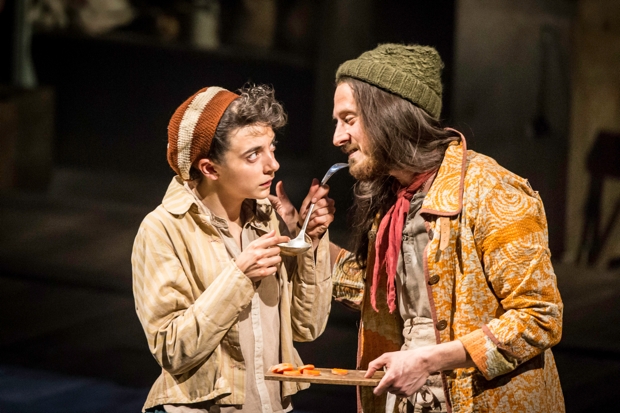When Robert Louis Stevenson wrote Treasure Island he declared triumphantly that if it wasn’t a winner with boys, then he didn’t know what boys were like. And it was indeed the perfect boys’ book; pirates, a map, treasure, a boy hero, black-hearted villains and gore. Perfect. It was, therefore, with mixed feelings that I sat through the National Theatre’s feminist take on Treasure Island last night.
On the bright side, the set was phenomenal, a cavernous structure like a whale’s ribcage enclosing the action, with the ribs descending like some sort of swamp creature. In fact, Lizzie Clachan’s design – she had great fun with the rising central platform – stole the show.
But reader, did Jim Hawkins have to be a girl, even a perfectly sprightly girl like Patsy Ferran? Did the pirates have to include women, even women with piratical names like Silent Sue, Joan the Goat and Red Ruth? When the squire observes sorrowfully that the events he witnesses cause him to lose faith in ‘English men and women’ it sounded as if Bryony Lavery’s script had been through a machine operated by Lynne Featherstone.
Look, I do, I really do take the point that in Shakespeare’s day, the boys had all the parts, including the girls’ ones. Ditto, that in old fashioned panto, girls are boys and boys girls. But in both cases, they played it straight. Jim Hawkins was called Jim Hawkins here but he really was a girl. In one interesting episode she gets kissed by Long John Silver. In sub-feminist mode, she grumbles: ‘so they think that maps are for men, not girls!’ In reality, I think we know exactly what would have happened to a girl on board the Hispaniola, quite apart from the old sailors’ prejudice about having women on board ship. There were a couple of historical female pirates, but that was it.
What this reminds me of is contemporary children’s books, especially for younger children, in which it is simply not done to have any adventure in which girls are not every bit as adventurous as boys, indeed usually more so. I can think offhand of a couple of pirate books in which characters like Red Ruth and Silent Sue feature; often the girls are the feistier characters. It’s part of the new didacticism whereby feminism is inculcated early on: get em young, and all that. So you get lots of girl princesses rescuing knights; that sort of thing.
But it really, really doesn’t work with Stevenson. He’d have hated it, thought it a travesty of the real world of pirates he was conjuring up. Treasure Island is a boys’ book; the only female character is Jim’s mother. Can’t we just live with that?
PS I should say, in justice, that my 11 year old could see a mile off that the piece had next to nothing in common with the book; he still loved it.







Comments